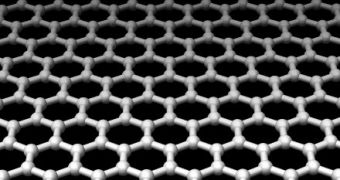Apparently, researchers' ongoing struggle for turning graphene into a usable technology has paid off, to some extent, not that physicists at the University of California, Riverside, have learned how to polarize electrons to give them the “spin” directional orientation.
Apparently, researchers have come up with a method that can achieve a certain operation called “tunneling spin injection” into graphene.
For those interested in a reminder, graphene is a single-atom-thick, strong, flexible and highly conductive sheet of carbon arrayed in a honeycomb pattern which also has high heat resistance.
Tunneling spin injection describes conductivity through insulation and seems to be the main candidate for actually turning graphene into a viable computing product.
Basically, through this method, an electron is polarized so that it gains a spin, the aforementioned sort of directional orientation, which can be either “spin up” or “spin down.”
Of course, as is the case with most breakthroughs, there are certain complications that can arise.
“Graphene has among the best spin transport characteristics of any material at room temperature, which makes it a promising candidate for use in spin computers. But electrical spin injection from a ferromagnetic electrode into graphene is inefficient,” explained Roland Kawakami, an associate professor of physics and astronomy, who led the research team.
“An even greater concern is that the observed spin lifetimes are thousands of times shorter than expected theoretically. We would like longer spin lifetimes because the longer the lifetime, the more computational operations you can do," he added.
The solution the researchers found for these concerns took the form of a “tunnel barrier”, a nanometer-thick insulating layer between the graphene layer and the ferromagnetic electrode.
The scientists also discovered that graphene has, theoretically, potential for very long spin lifetimes, especially when such a tunnel barrier is added.
"“This lifetime could be microseconds long. A long lifetime is a special property of graphene, making it a very attractive material for a spin computer," Mr. Kawakami said.

 14 DAY TRIAL //
14 DAY TRIAL //